Discover the must-see landmarks in Volterra to explore on your own, or on a shore excursion on a cruise to Livorno cruise port
Volterra has two major archaeological sites that are must see landmarks in this historical town that predate roman times. The Roman Theatre (and Baths) is the main archaeological attraction of Volterra.
The Archaeological Park is one of the few places where vestiges and ruins of the Etruscans tombs can be found. The imposing Fortezza Medicea is impossible to miss although not visitable.
1. Roman Theater and Baths - Teatro Romano (in Italian)
The Teatro Romano is a magnificent theatre dating back to the 1st century BC that once held between 1,800 and 2,000 seats. Although a medieval wall was built on top of part of the theatre in the 13th century, it became one of Italy’s most well-preserved remains after its excavation by Enrico Fiumi in the 1950s.
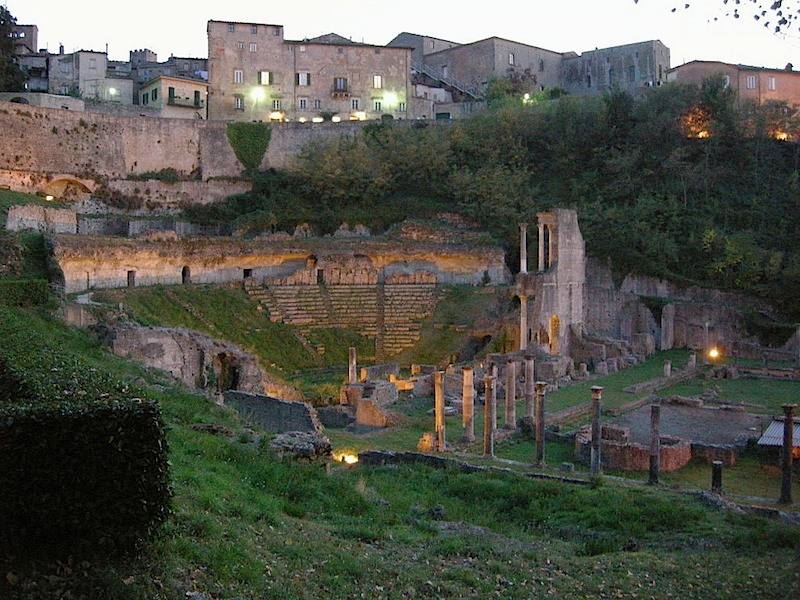
Volterra Teatro Romano
Photo: Sailko (Creative Commons)
The 19 rows of the cavea – seating area – remain along with the orchestra where Volterra’s best citizens sat, the space where the wooden stage lay, and a partial reconstruction of the 15.57-meter high scaenae frons rising up behind the stage.
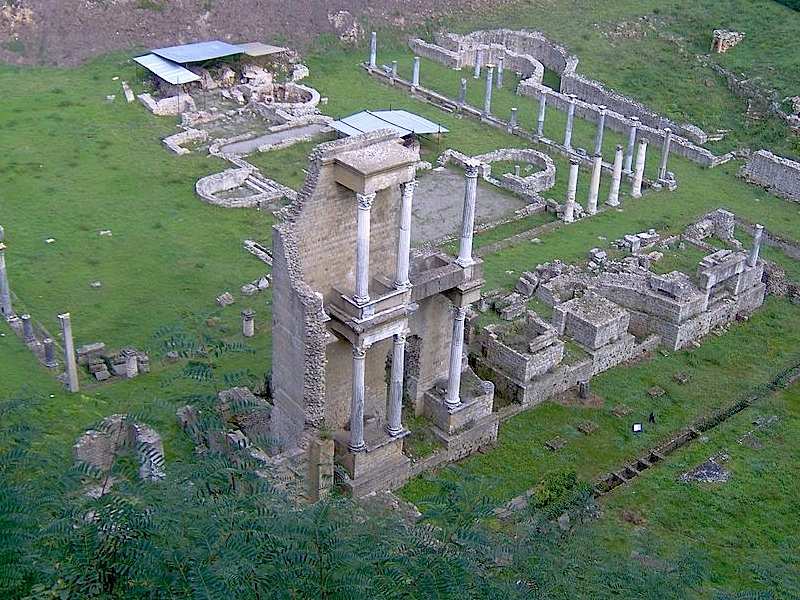
Volterra Teatro Romano
Photo by Loulou73 (Creative Commons)
Behind the theatre are the 3rd century Roman Baths, of which the vestibule, the cold baths, hot baths, and the circular sauna room can still be seen.
Where: North East of Piazza dei Priori
Open: Mar 16 to Nov 2 between 10:30am to 5:30pm | Nov 2 to Mar 15 between 10:00am to 4:00pm (Sat. and Sun. ONLY)
Closed: December 25 and January 1
2. Arch Door - Porta all’Arco (in Italian)
The imposing Porta all’Arco was built in the 4th century BC and served as the main gateway of Volterra in Etruscan times, more than 2,400 years ago. Although the Romans rebuilt a lot of the arch in the 1st century BC, the worn basalt heads of the Etruscan gods Tinia, Uni and Menrva still greet any entrants into the city both residents and tourists.
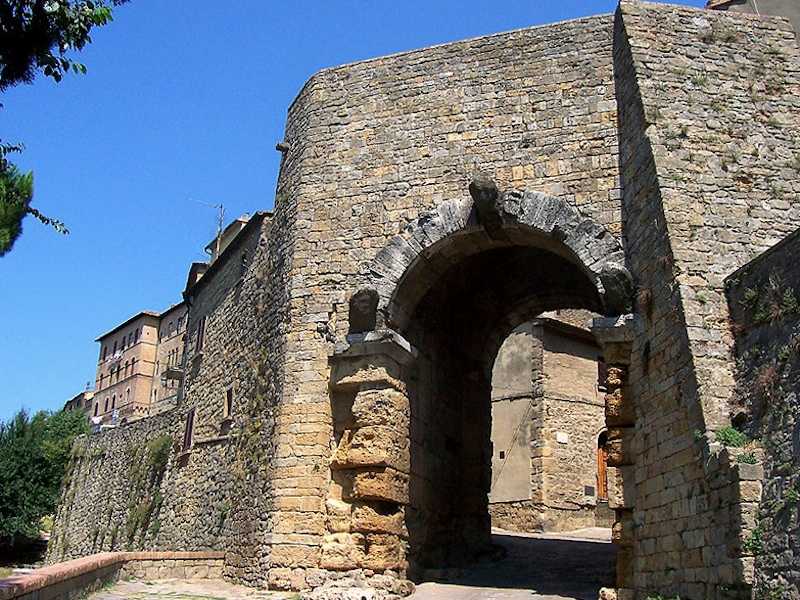
Volterra Porta all'Arco
Photo: Geobia (Creative Commons)
Visitors should also note the small plaque commemorating the citizens of Volterra who filled the Porta all’Arco with stones in 1944 so that it would not be destroyed by advancing German troops.
3. Medici Fort - Fortezza Medicea (in Italian)
The Fortezza Medicea was built in 1474, two years after Florence conquered Volterra in order to control the aluminum mines nearby. The Fortezza was meant to protect the city from invasion, but also to keep control of a population that might not be inclined to follow the new Florentine masters’ orders.
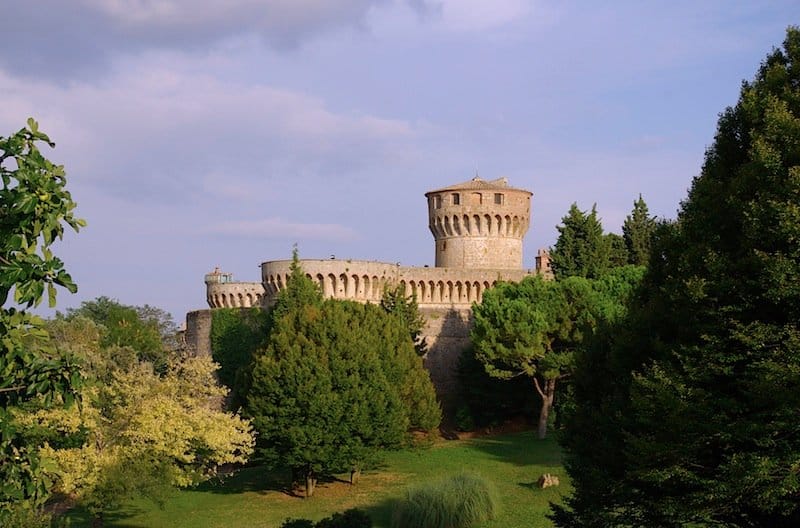
Volterra Fortezza Medicea
Photo by Geobia (Creative Commons)
Built on top of an ancient castle called the Cassero (completed in 1292) the Fortezza Medicea was a massive structure that loomed over the city and dominated the skyline. Today the structure is still impressive and can be seen from all over Volterra.
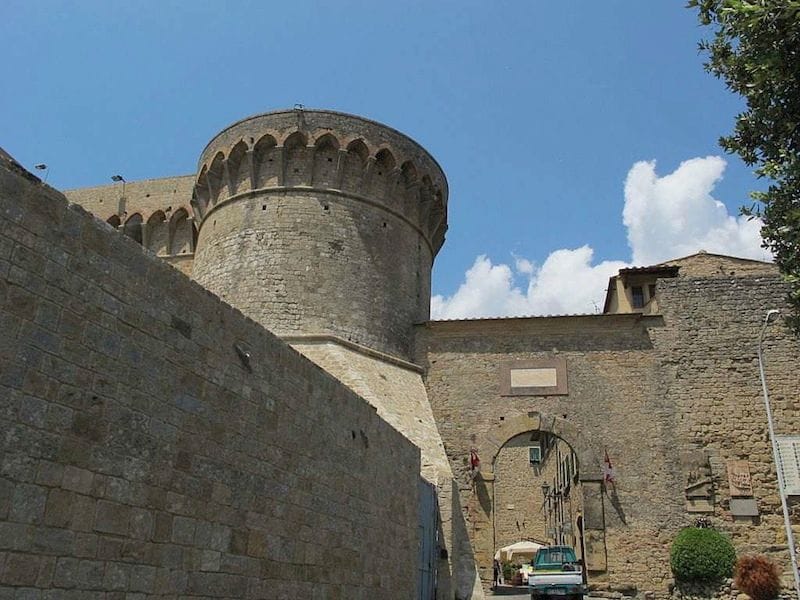
Volterra Fortezza Medicea
Photo by Sailko (Creative Commons)
The eastern section of the Fortezza is the oldest part and referred to as the Rocca Vecchia while the newer part is called the Mastio. Unfortunately, the Fortezza now serves as a prison, so visitors are unable to tour the interior.
4. Archaeological Park - Parco Archeologico (in Italian)
The Parco Archeologico is located to the west of the Fortezza Medicea on the site of the ancient Acropolis. Today it is a beautiful little grassy park with a few trees and gravel pathways lined by hedges.
Although it is a perfect spot for a picnic or just to take a break from sightseeing and relax, it offers little in the way of archaeological ruins. There are a few ruins of Etruscan tombs. The Parco Archeologico is Volterra’s public park, so there is no admission fee required to enjoy its welcomed respite.
Etruscan Acropolis and Roman Cistern. Inside the Enrico Fiumi archaeological park, it is possible to visit the archaeological excavations of the Etruscan city’s acropolis. The Fiumi Park is the main green space of the city, a large urban park placed on the highest plain, sheltered by the Medici fortress. Full ticket: € 5,00.
Where: North East of Piazza dei Priori
Open: Mar 16 to Nov 2 between 10:30am to 5:30pm | Nov 2 to Mar 15 between 10:00am to 4:00pm (Sat. and Sun. ONLY)
Closed: December 25 and January 1
The Volterra Card
Volterra Card offers excellent rates and is valid for 72 hours. The following museums are included in the price: Guarnacci Etruscan Museum, Art Gallery, Ecomuseum of Alabaster, Priori Palace, Etruscan Acropolis and Roman Cistern and Roman Theatre. Full price: €13.00.





